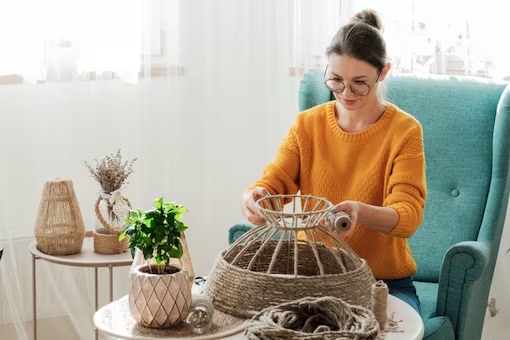Beyond aesthetics, interior design holds the power to deeply influence our mental health, well-being, and sense of security. A well-designed space aims to create a comfortable and functional environment that nurtures our mental wellness. Your home serves as a sanctuary, a place where you can unwind, relax, and escape from the outside world. Returning to your personal retreat after a demanding and stressful day is truly rejuvenating. The ambience of your home plays a significant role in shaping a positive atmosphere, uplifting your mood, fostering happiness, and enhancing your mental well-being. By revamping your decor, you can invite positive vibes into your living space. Here are some ways to tweak your decor and increase the happiness factor in your home.
- Embrace Natural Elements:
Bringing nature indoors has a profound impact on our well-being. Incorporating natural elements into your interior design helps create a sense of tranquillity and connection with the outside world. Consider adding indoor plants to improve air quality and create a calming atmosphere. Plants also provide a visual connection to nature, which has been proven to reduce stress levels and increase productivity. Additionally, use natural materials like wood, stone, and natural fabrics to evoke a grounding effect and promote a sense of harmony. - Design a Relaxation Zone:
Create a dedicated space within your home that promotes relaxation and self-care. This could be a cosy corner with a comfortable chair or a chaise lounge where you can unwind and escape from daily stresses. Enhance the ambience by incorporating soft lighting through the use of dimmers or ambient lamps. Add elements such as scented candles, soothing music, or a small water feature to create a serene environment that encourages relaxation and stress relief. - Utilize Calming Colours and Lighting:
Colour psychology plays a significant role in influencing our emotions and mental state. Opt for a colour palette that promotes relaxation and calmness. Soft, muted hues like blues, greens, and pastels can create a soothing ambience. These colours have been found to reduce anxiety and promote a sense of tranquillity. Additionally, consider incorporating warm and gentle lighting to create a cosy atmosphere. Harsh lighting can be disruptive and increase stress levels, so opt for softer lighting options that mimic natural light. - Maximize Natural Light:
Natural light has a profound impact on our mood and overall well-being. Arrange your furniture to maximize the flow of natural light into your living space. Natural light helps regulate our circadian rhythms, improves vitamin D levels, and enhances our mood. Use light-coloured curtains or blinds that allow sunlight to filter through and brighten your space. A well-lit environment can uplift your spirits and create a positive atmosphere. - Embrace Minimalism and Organization:
A cluttered environment can lead to a cluttered mind. Embrace minimalism in your interior design by decluttering and organizing your space. Implement storage solutions that keep your belongings neat and out of sight. A clean and organized living space promotes a sense of calmness and reduces mental strain. Emphasize simplicity in your design choices and only keep items that bring you joy and serve a purpose.
Incorporating these interior design ideas into your living space can have a profound impact on your mental health. Remember to personalize these ideas according to your preferences and needs, as everyone’s journey to mental well-being is unique.


